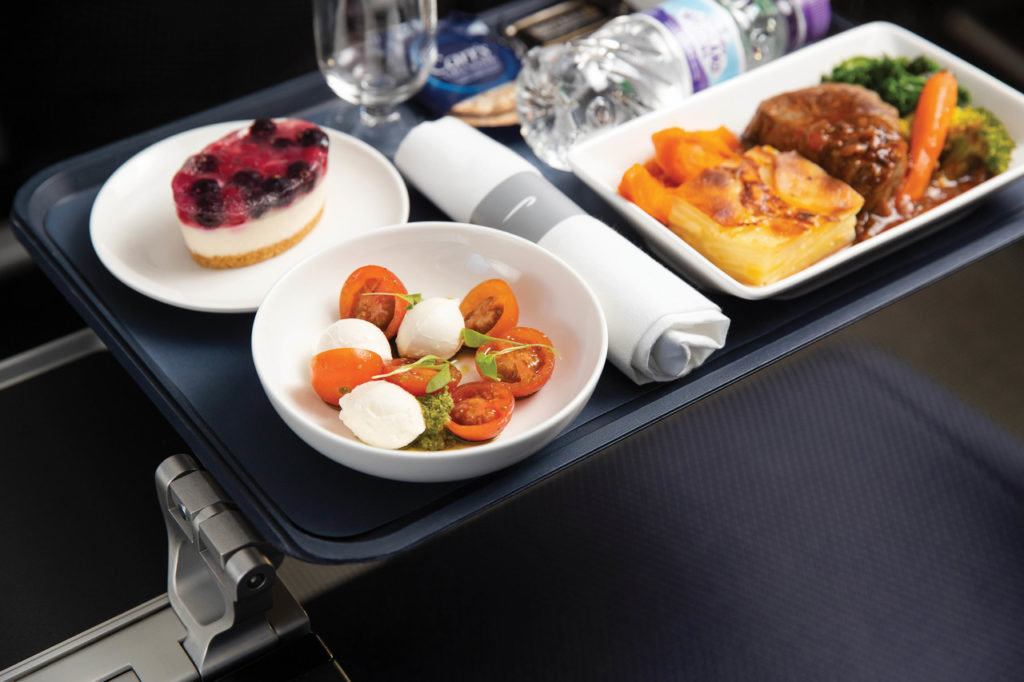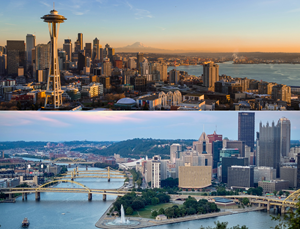Food at Altitude: Airlines Navigate Effect of Flight on Taste Buds
From recipe tweaks to specially brewed beer, pleasing airborne palates is a priority
By Rick Wills
Published January 17, 2020
Read Time: 3 mins
Does your favorite sandwich or candy bar taste inexplicably bland at 35,000 feet?
If so, you’re not alone. That’s why airlines increasingly are trying to adapt meals and some drinks, from beer to tea, to appeal to taste buds dulled at high altitudes.
Flying has a very real effect on the smell and taste of food and drinks for a number of reasons, including humidity levels, temperature and even jet engine noise, experts say.
“There are many factors why food and drinks taste different in airplanes,” said Vandana Sheth, spokesperson for the Cleveland-based Academy of Nutrition and Dietetics and a dietitian in Los Angeles.
Airplanes are cold, they have unusually low humidity — planes are generally drier than the Sahara desert – and pressurized cabins lower blood oxygen levels. All three affect taste, Sheth said.
“The cold temperature inside an airplane affects our taste,” Sheth said. So do lower blood oxygen levels from pressurized cabins, she said.
“You can’t taste sweetness or saltiness nearly as well on an airplane due to altitude and pressure, as well as a lack of humidity,” According to Out of the Blue, a blog for JetBlue Airlines.
Additionally, a 2010 study commissioned by Lufthansa and conducted by the Fraunhofer Institute in Germany, showed sensitivity to sweet and salty foods drops by about 30 percent in the air, compared to the ground.
That estimate might be conservative, Antonio Fernandez, AeroMexico’s senior vice president for on-board product, told CNN.
“In the air, you lose almost 70 percent of your sense of taste,” he said.
So how do airlines adjust? It’s tricky.
Adapting the menu
British Airways, which operates flights between Pittsburgh and London, handles about 145,000 passengers worldwide every day. Typically, its flights offer as many as 12 different meals, said Chip Garner, a U.S. spokesman for BA – including specialty meals, such as kosher and vegetarian options.
Airline chefs try to accommodate when they develop meals, but there’s no easy solution. The taste of both salt and sugar, for example, is diminished at high altitudes — yet adding more just dehydrates travelers.
“There’s no formal recipe creation that looks to boost taste. But it is definitely something the airline’s chefs keep in mind,” Garner said.

British Airways flights can offer as many as 12 different meals, including specialty kosher and vegetarian options. (Photo courtesy of British Airways)
They’re also aware that at high altitudes, only umami — the pleasant, savory fifth taste favored by Japanese chefs — is enhanced, for reasons that are not entirely clear.
“Spicy flavors like curry, ginger, garlic and umami-rich flavors from mushrooms, seaweed, hard cheese and even fresh fruit can stand to the changes better and enhance the taste of food on airplanes,” said Sheth, the dietitian.
Those ingredients lend richness and depth to dishes, she said.
JetBlue works with New York City restaurant Saxon+Parole and its executive chef, Brad Farmerie, a Pittsburgh native.
When he developed a menu for the airline, he said, “I knew that I needed to incorporate acidity, heat and umami to make up for the muted sense of smell and taste.”
These elements give the cuisine a lift and accentuate natural flavors without the need for more salt, he says.
JetBlue’s popular carrot and ginger soup with chili marshmallow is an example: It combines fresh carrot flavor with white miso for umami, lemon juice for acidity, and ginger and chili for sweet spice, all of which provide flavor without extra salt or sweetener.
Drinking up
The taste of drinks above the clouds can be just as unpredictable, although several airlines have had beer brewed to be tasty more than five miles above the ground.
Last year, British Airways partnered with Brewdog, a Scottish craft brewery, to make the Speedbird 100 beer on a Boeing 787 Dreamliner cruising over northern Scotland. The brewery claims it is the first beer ever created on an airplane.
Two years ago, Cathay Pacific, the Hong Kong carrier, introduced a beer brewed to taste good on an airplane. It contains honey and “dragon eye,” a fruit native to southern Asia that tastes like lychee, another Asian fruit.
Some wines fare better on airplanes than others, particularly those from countries like Chile, where grapes are grown at high altitudes. Champagne, meanwhile, is probably best avoided while flying, some food experts say, because the cabin pressure causes it to lose its fizz quickly.
Watch
This Next
Read
This Next





